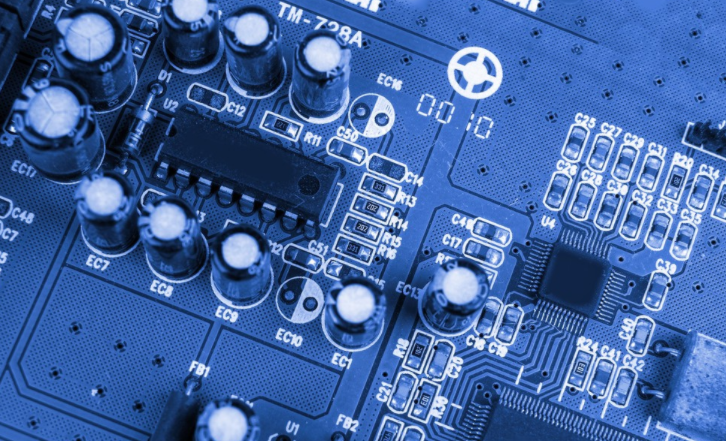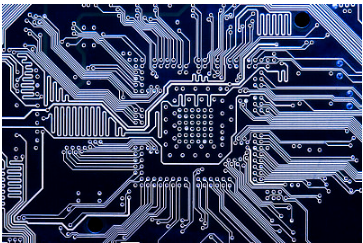
Some small principles of PCB technology
The width of PCB board wire is related to the amount of current flowing through the wire:
1. If the line width is too small, the resistance of the newly printed wire is large, and the voltage drop on the line is also large, which will affect the efficiency of the circuit If the line width is too wide, the wiring density is not high, and the board area is increased In addition to new costs, it is not conducive to miniaturization If the current load is calculated as 20A/mm2, when the thickness of copper clad foil is 0 5 mm, (usually)), 1 mm (about 40 mil) line width current load is 1A, 1-2.54 mm (40-100 mil) can meet the general application requirements. The ground wire and power supply on the high-power equipment board can be added appropriately according to the power size In low power digital circuits, the line width can be increased to improve the wiring density A wide range of 0.254-1.27MM (10-15MIL) can meet the requirements
PCB board

In the same circuit board, the power line and ground line are thicker than the signal line:
2. Line spacing: when the distance between lines is 1.5 mm (about 60 MIL), the insulation resistance between lines is greater than 20 M Ω, and the withstand voltage between lines can reach 300 V. When the line spacing is 1MM (40MIL), the withstand voltage between lines is 200V. In this case, on the medium and low voltage circuit board (the line voltage does not exceed 200V), the line spacing is 1.0-1.5MM (40-60MIL). In low-voltage circuits, such as digital circuit systems, the breakdown voltage does not need to be considered, and can be very small as long as the production process allows.
3. Pad: For 1/8W resistor, the diameter of the pad lead is 28MIL, for 1/2W, the diameter is 32MIL. The lead hole is too large, and the width of the copper ring of the pad is relatively reduced, resulting in reduced pad adhesion. It is easy to fall off, the lead hole is too small, and it is difficult to place components.
4. Draw the circuit frame: the short distance between the frame line and the component pin pad should not be less than 2MM (generally 5MM is reasonable), otherwise it will be difficult to cut the data.
5. Principles of component layout:
1) General principle: In PCB design, whether there are digital circuits and analog circuits in the circuit system at the same time. As with high current circuits, they must be arranged separately to achieve the coupling between each system in the same type of circuit, and the components must be placed in blocks and partitions according to the signal flow and function.
2) The input signal processing unit and output signal drive assembly shall be close to the edge of PCB board, so that the input and output signal lines shall be as short as possible to reduce the interference of input and output.
3) Component placement direction: components can only be arranged horizontally and vertically. Otherwise, they cannot be used in parts.
4) Element spacing: For medium density circuit boards and small components, such as low-power resistors, capacitors, diodes and other discrete components, the spacing between them is related to the insertion and welding process. During wave soldering, the element spacing can be 50-100MIL (1.27-2.54mm), and it can be larger manually. If 100MIL is selected, the element spacing of integrated circuit chips is generally 100-150MIL.
5) When the potential difference between components is large, the distance between components shall be large enough to prevent discharge.
6) The decoupling capacitor in the integrated circuit should be close to the power and ground pins of the chip. Otherwise, the filtering effect will be poor. In the digital circuit, in order to ensure the reliable operation of the digital circuit system, an integrated circuit decoupling capacitor is placed between the power supply and the grounding of each digital integrated circuit chip. Decoupling capacitors usually use ceramic capacitors. The capacity of decoupling capacitor is usually selected according to the reciprocal of system operating frequency F. In addition, a 10UF capacitor and a 0.01UF ceramic capacitor shall be added between the power line and the ground wire at the circuit power inlet.
7) The circuit components of the clock hand should be as close to the clock signal pin of the single chip microcomputer chip as possible to reduce the wiring length of the clock PCB board, and do not wire below it
The above is the explanation given by the editor of pcb circuit board company. If you want to know more about PCBA, you can go to our company's home page to learn about it. In addition, our company also sells various circuit boards,
High frequency circuit board and SMT chip are waiting for your presence again.






